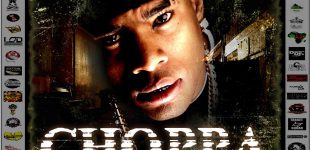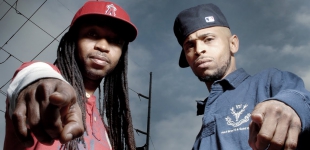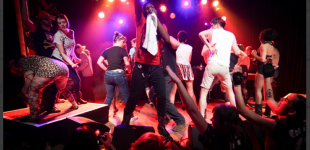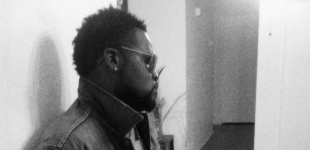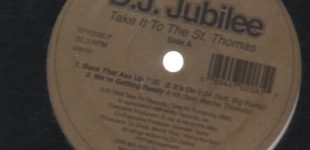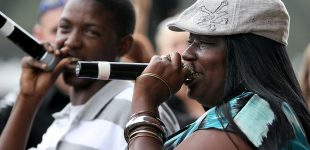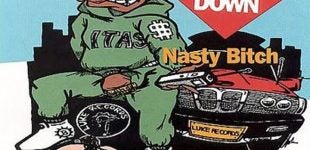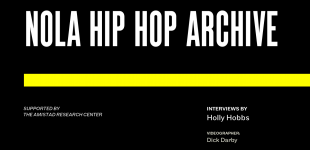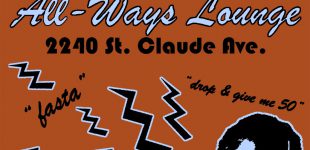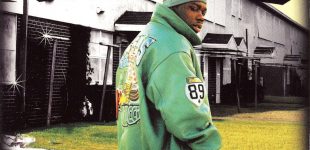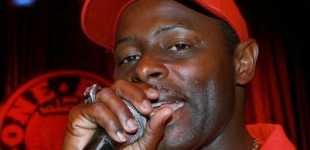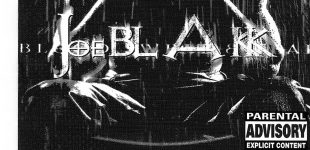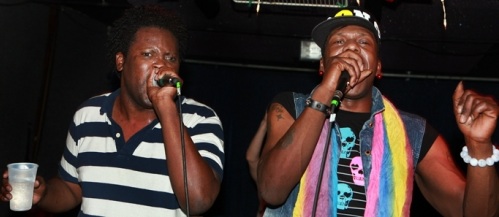

Bounce is an intensely local and popular form of indigenous street music in New Orleans that has had an indelible influence on hip-hop, brass band, and other cultural and artistic forms since its sound first coalesced in the early 1990s. Growing out of the local New Orleans rap scene of the late 1980s and influenced by the Mardi Gras Indian tradition, among others, the subgenre called “bounce” is percussive, highly rhythmic and purposely repetitive, with a central focus on dance. With strong African diasporic retentions, bounce features extensive use of call and response, “roll calls” of New Orleans wards and neighborhoods, simple melodic lines, and signature sounds sampled from other recordings. Bounce has also come to be known by a number of community monikers, including “project music” or sometimes, simply, “that/dat beat.” As an intensely local and participatory musical form, bounce is, in many ways, the sound of the streets in New Orleans.
In 1991, an artist named MC T. Tucker gained a local following with a song called “Where Dey At,” performed over a backing track by DJ Irv that sampled the 1986 single, “Drag Rap,” by a New York group called The Showboys. Performing in New Orleans clubs like Uptown Hollygrove’s Ghost Town, the popularity of T. Tucker and DJ Irv’s track, recorded and released on cassette, inspired another local artist, DJ Jimi, to record his own version, which he named “Where They At.” The original Showboys sample featured the iconic riff from the popular television series, Dragnet — “dum dahdumdum…dum dahdumdum DAH” — as well as a high-pitched ostinato arpeggio instrumental pattern which came to be known as the “Triggerman” beat. It was also known as “Triggaman bells” or simply the “Triggaman,” in all cases, named after Showboys’ member Phillip “Triggerman” Price. Although The Showboys’ record had little impact nationally, its popularity grew in Southern cities like Memphis and New Orleans, giving the song new life. DJ Jimi’s full-length album followed the release of his version of “Where They At” and it was produced by Leroy “Precise” Edwards (who would soon become well-known for his production if Mystikal and others). By 1992, bounce had become a full-blown movement.
Many of the conventions of bounce music, especially in its early forms, came from outside of New Orleans. As has been extensively detailed in Matt Miller’s Bounce: Rap Music and Local Identity in New Orleans (2012), foundational elements of the genre included the “Triggaman bells,” the Triggaman 808 drum-machine beats from “Drag Rap,” the “Brown Beats” instrumental from California DJ Cameron Paul, the “Rock the Beat” instrumental from British DJ and rapper Derek B, and the “Cheeky Blakk beat.” The latter is a variation on “Brown Beats” created for New Orleans rapper Cheeky Blakk in the mid-‘90s by legendary producer Mannie Fresh, and in addition, Blakk’s work contains one of the first mentions of “twerking” on record.
Some other defining characteristics of New Orleans bounce were locally derived. There is the ease with which elements of other local traditional musics were used in bounce performance, as in the case of brass band or marching band tracks sampled or played live on bounce songs. Examples include the following: the use of the Rebirth Brass Band’s “I Feel Like Funkin’ It Up” on Da Sha Ra’s “I Feel Like Bootin’ Up” (1993); the use of Smokey Johnson’s “It Ain’t My Fault” on J Ro’ J’s “Let’s Jump”; the sousaphone-driven bass line on Gregory D and Mannie Fresh’s proto-bounce song “Buck Jump Time” (1987); or the John McDonough High School marching band’s appearance on Ricky B’s “Y’All Holla” (1995). Mardi Gras Indian chants and melodies also frequently appear, as in the use of “Iko Iko” melody line in DJ Jubilee’s (feat. K.C. Redd) “Hot Girlz on Fire,” or Ricky B’s bounce hybrid recording of the Mardi Gras Indian classic, “Let’s Go Get ‘Em.”1
In its early days, Cash Money Records was essentially a bounce label, with in-house producer Mannie Fresh at the helm. It was at Cash Money that Ms. Tee and later Magnolia Shorty made important in-roads for female musicians while groups like U.N.L.V. created popular tracks that would come to be termed “gangsta bounce.” DJ Jubilee came to be recognized as the city’s most popular bounce DJ and his 1993 albums Do The Jubilee All and Stop, Pause stand as classics of the genre. Uptown’s Partners- n-Crime (featuring artists Kango Slimm and Mr. Meana) were also among the genre’s most popular artists. Their “Pump Tha Party” and “NO Block Party” tracks continue to be in heavy rotation at block parties and performance events even today. For over a decade, bounce was generally performed and recorded at mid-tempo BPMs. The release of 10th Ward Buck’s song “Fasta,” among others, ushered in a new, post-Katrina movement with an up-tempo style featuring frenetic pacing and phrasing still indicative of the genre today.
Bounce experienced a slight decline in popularity prior to Hurricane Katrina, but there was a considerable revival of the genre after the storm, culminating in both international interest and acclaim for its newer LBGTQ-identified so-called “sissy bounce” artists, including Big Freedia, Katey Red, and Sissy Nobby, among others, and attention for its pioneering foundational artists. In 2012, Atlanta rapper T.I. recorded a bounce track called “Ball,” which featured Lil Wayne and was accompanied by a video shot on location in New Orleans’ Lower 9th Ward. Also in 2012, mega- producer Diplo recorded a track called “Express Yourself,” featuring New Orleans bounce rapper Nicky da B, which was a global hit. (Nicky da B passed away in September 2014 at the age of 24.) Despite its growing popularity and increasing commodification, bounce continues to play an integral role in local performance, festival, and identity in New Orleans. In November 2013, DJ Jubilee headlined a sold-out acoustic bounce show at New Orleans’ famed Preservation Hall, backed by a live band.
Holly Hobbs is a Bounce and Hip-Hop scholar living in New Orleans.
Suggested Reading:
10th Ward Buck, Lucky Johnson, and Alison Fensterstock. 2010. The Definition of Bounce: Between Ups and Downs in New Orleans. New Mouth from the Dirty South.
Miller, Matt. 2012. Bounce: Rap Music and Local Identity in New Orleans. Amherst: University of Massachusetts Press.
Roni Sarig. Third Coast: Outkast, Timbaland, and How Hip-Hop Became a Southern Thing. New York: Da Capo Press, 2007.
Ned Sublette. The Year Before the Flood: A Story of New Orleans. Chicago: Lawrence Hill, 2009.
Suggested Links:
Hobbs, Holly. NOLA Hiphop Archive. http://musicrising.tulane.edu/discover/people/439/. Music Rising. New Orleans 2014.
Alison Fensterstock & Aubrey Edwards. “Where They At: New Orleans Hip-Hop and Bounce in Words and Pictures.” http://wheretheyatnola.com/. New Orleans 2010.
